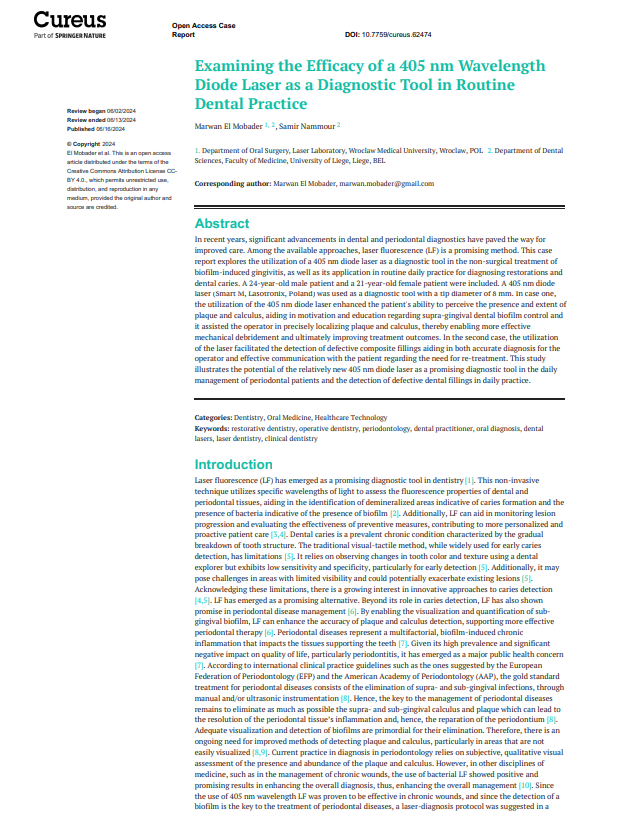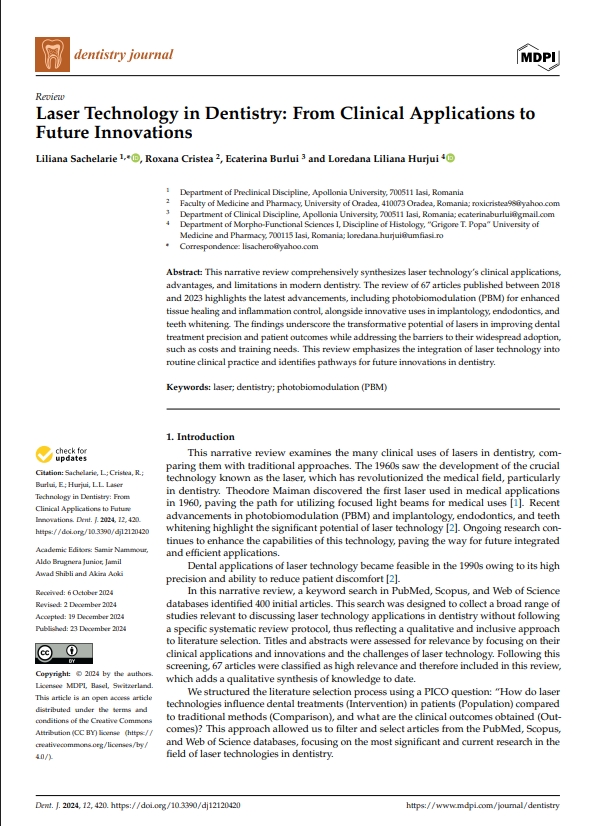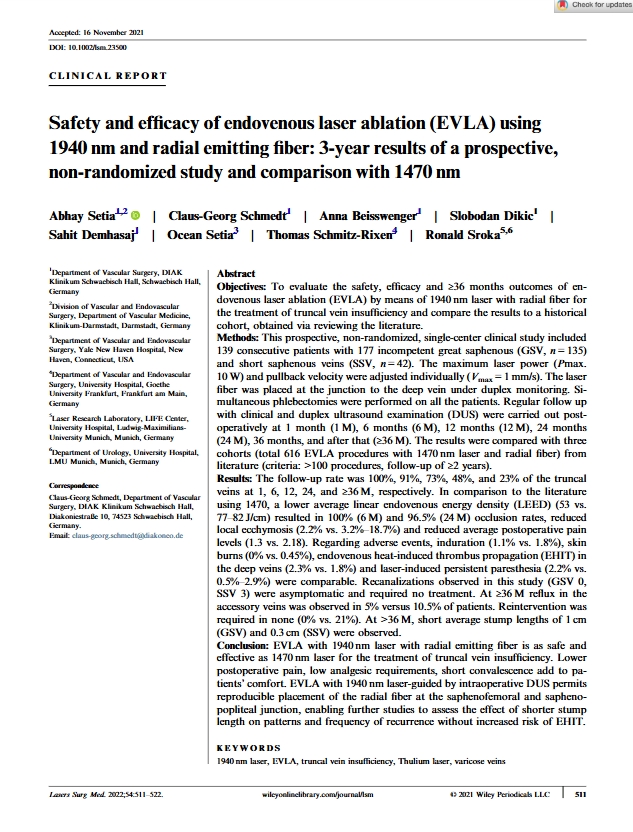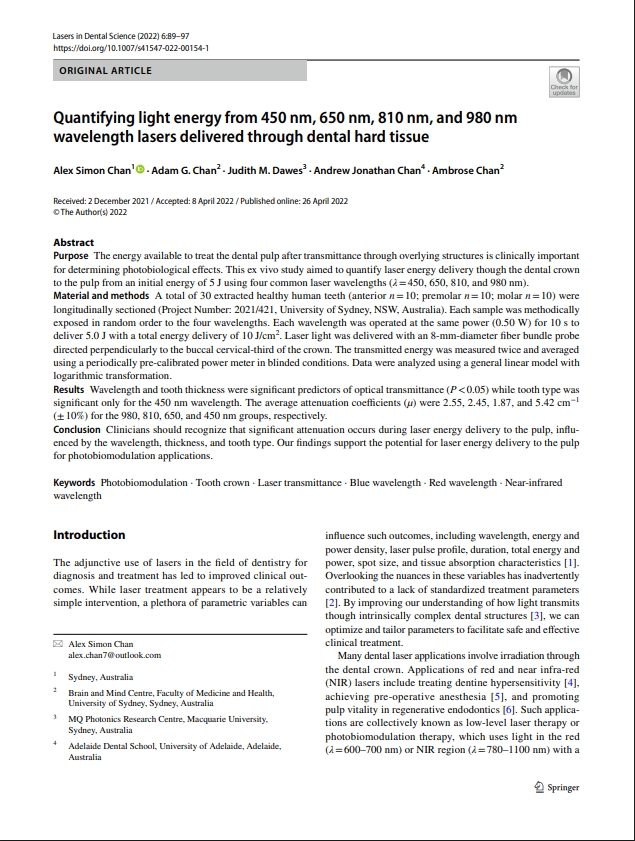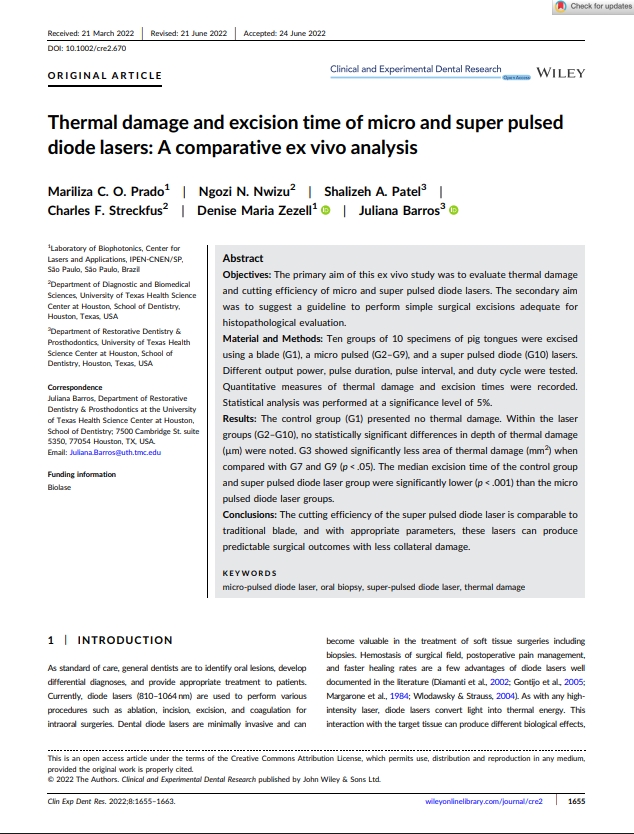Examining the Efficacy of a 405 nm Wavelength Diode Laser as a Diagnostic Tool in Routine Dental Practice
Recent advancements in dental diagnostics highlight laser fluorescence (LF) as a promising tool. This report explores the use of a 405 nm diode laser in treating biofilm-induced gingivitis and diagnosing restorations and caries in two patients (24-year-old male, 21-year-old female). In the first case, the laser improved visualization of plaque and calculus, aiding patient education and enabling precise mechanical debridement for better gingivitis treatment outcomes. In the second case, it detected defective composite fillings, supporting accurate diagnosis and patient communication for re-treatment. The 405 nm diode laser proves valuable for periodontal care and restorative dentistry.
